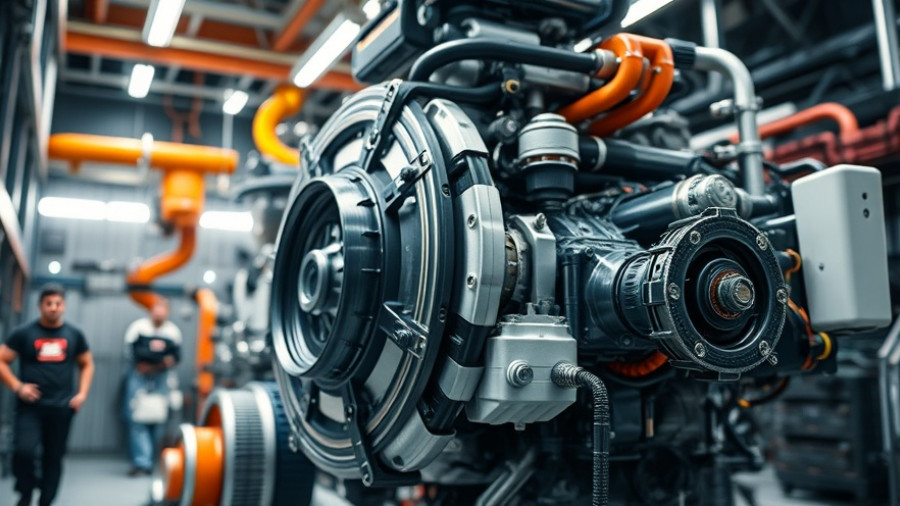
The Future of Maritime Fuel: A Breakthrough in Methanol Technology
In a significant advancement for the shipping industry, Everllence has successfully completed the world’s first conversion of a B&W S90 two-stroke engine to operate on dual-fuel methanol. This pioneering retrofit was conducted on Cosco Shipping Lines’ impressive 20,000 TEU container vessel, the Cosco Shipping Libra, marking a notable milestone in efforts towards decarbonization and sustainable shipping practices.
How the Retrofit Works
The retrofit transitioned the vessel's 11S90ME-C engine to an 11S90ME-LGIM configuration, utilizing Liquid Gas Injection Methanol. Such conversions are crucial as they enable vessels to adapt to changing fuel landscapes without the need for entirely new engines. This adaptability is vital for shipowners who are navigating environmental regulations and striving for greater fuel efficiency.
The Role of Testing and Innovation
To validate the performance of the S90 engine under methanol fuel conditions, Everllence established a dedicated testbed engine in Japan. Commissioned in early 2025, this facility is a testament to the company's commitment to ensuring that their retrofitted engines meet rigorous operational standards, proving both the reliability and efficiency of methanol as a viable marine fuel.
Implications for the Shipping Industry
This retrofit is not just a technical achievement; it represents a new era in marine operations. With over 300 S90-class vessels worldwide, the potential for further conversions is substantial. This opens up new opportunities for shipping companies looking to reduce their carbon footprint while remaining competitive in a rapidly evolving market.
Challenges and Collaborative Efforts
However, the journey towards decarbonization is complex and requires collaborative efforts from all sectors within the industry. As highlighted by Michael Petersen, Senior Vice President at Everllence, achieving effective decarbonization will depend on united action across various stakeholders. Addressing regulatory challenges and establishing a robust infrastructure for alternative fuels like methanol are essential steps forward.
Looking Ahead: The Future of Marine Fuels
One can anticipate that this success will lead to greater acceptance of methanol as a mainstream marine fuel. Methanol is already gaining traction across the globe as an alternative to traditional marine fuels, supported by its lower emissions profile. Industry leaders foresee a transition where ships equipped with dual-fuel systems can play a pivotal role in reducing maritime emissions significantly.
Broader Industry Trends
This innovative conversion aligns with broader trends towards increasing sustainability in maritime operations. Everllence's successful retrofit is part of a commitment to addressing environmental concerns and meeting international regulations, such as the IMO's ambitious goal of reducing shipping emissions by at least 50% by 2050. As these standards tighten, fleets that adapt rapidly to alternative fuels like methanol will be better positioned for success.
Conclusion: Embracing Change in Marine Technology
The completion of the first S90 methanol engine retrofit signifies a pivotal shift in marine technology and fuel adaptation. It demonstrates not only technical capability but also the potential for sustainable practices to reshape the maritime industry for years to come. As more vessels transition to greener fuel alternatives, shipowners, operators, and manufacturers will need to collaborate closely, embracing innovations that drive efficiency and compliance. The path toward sustainable shipping is open, and this retrofit is a crucial step in that journey.
 Add Row
Add Row  Add
Add 




Write A Comment